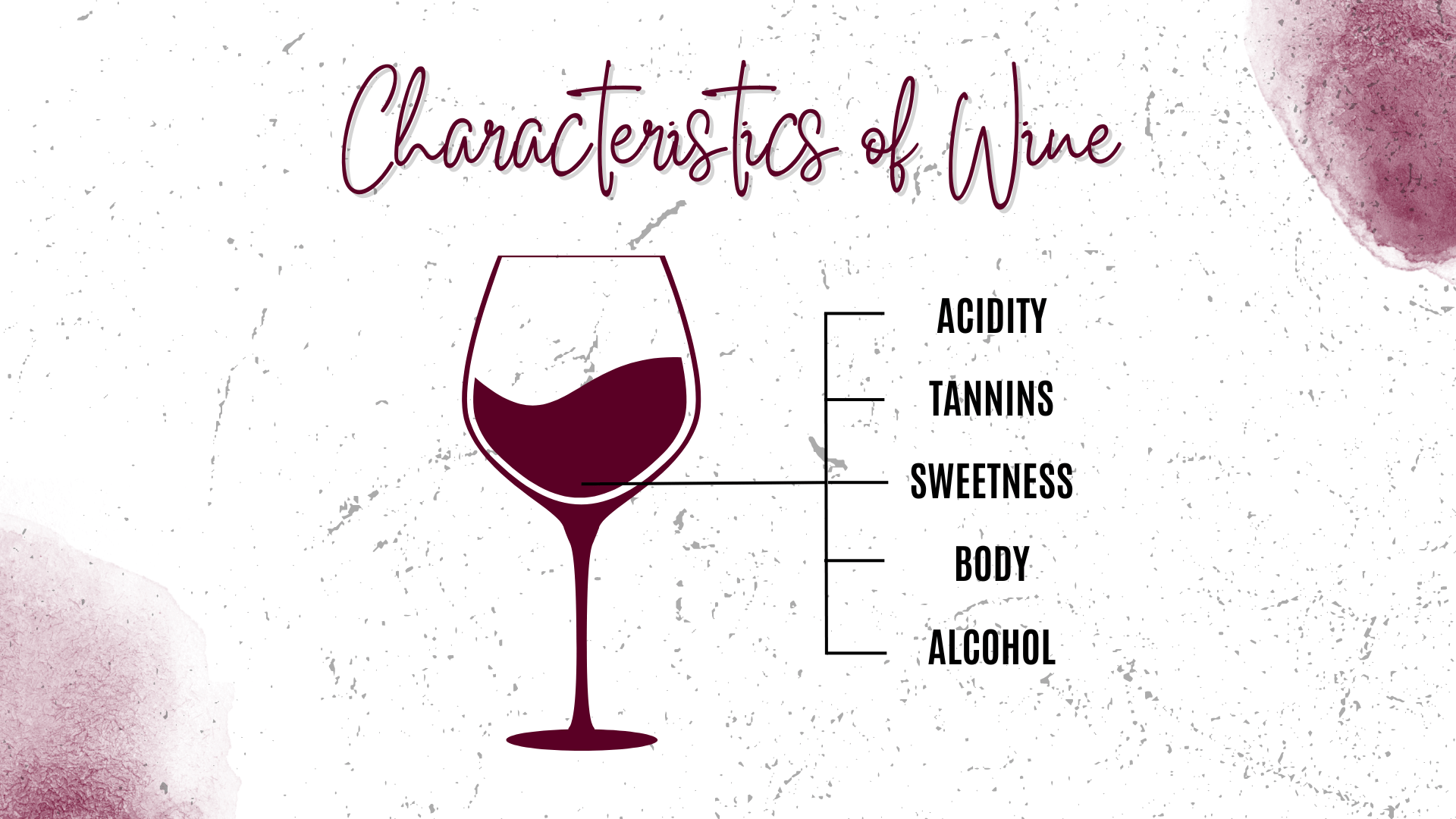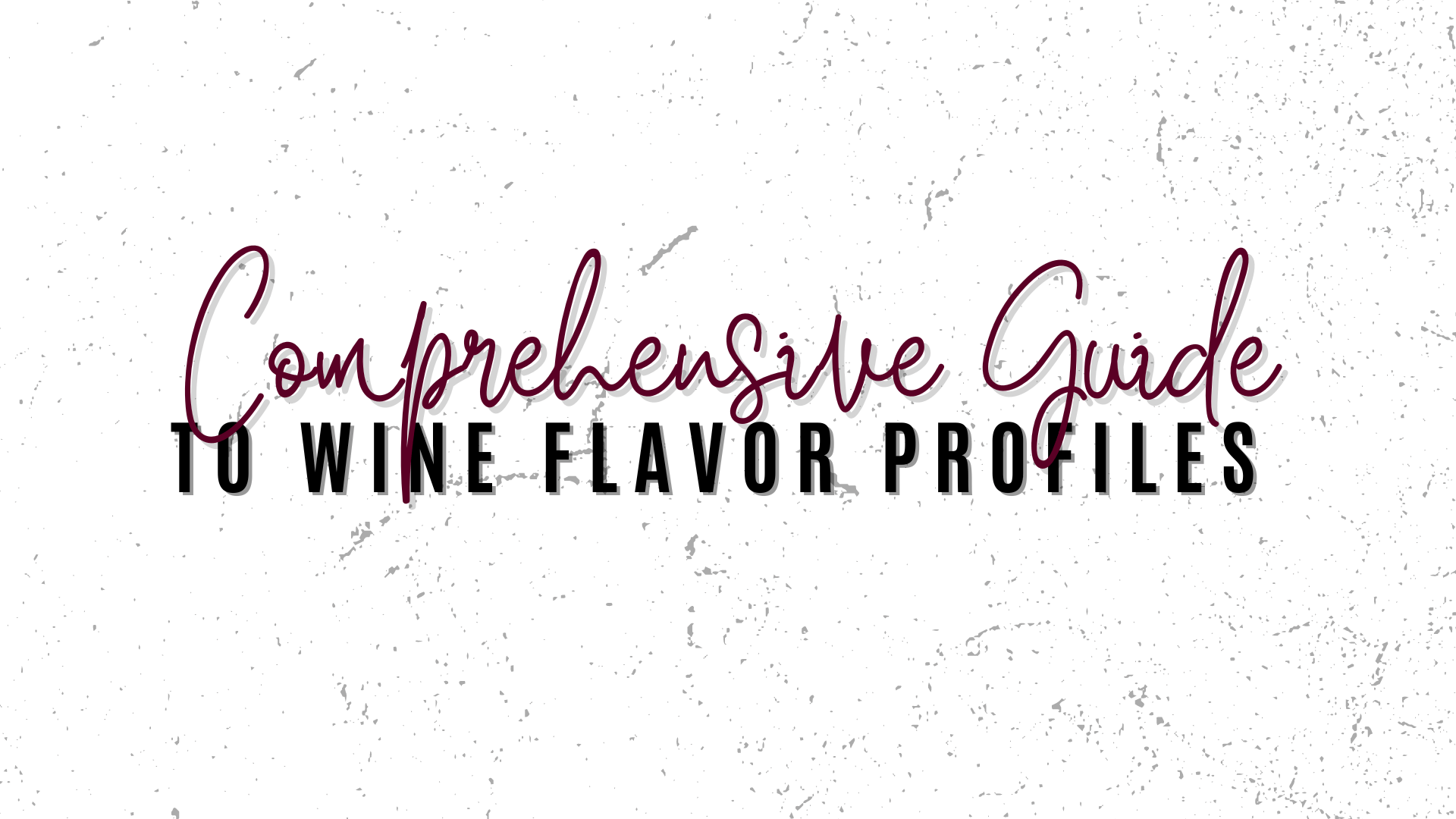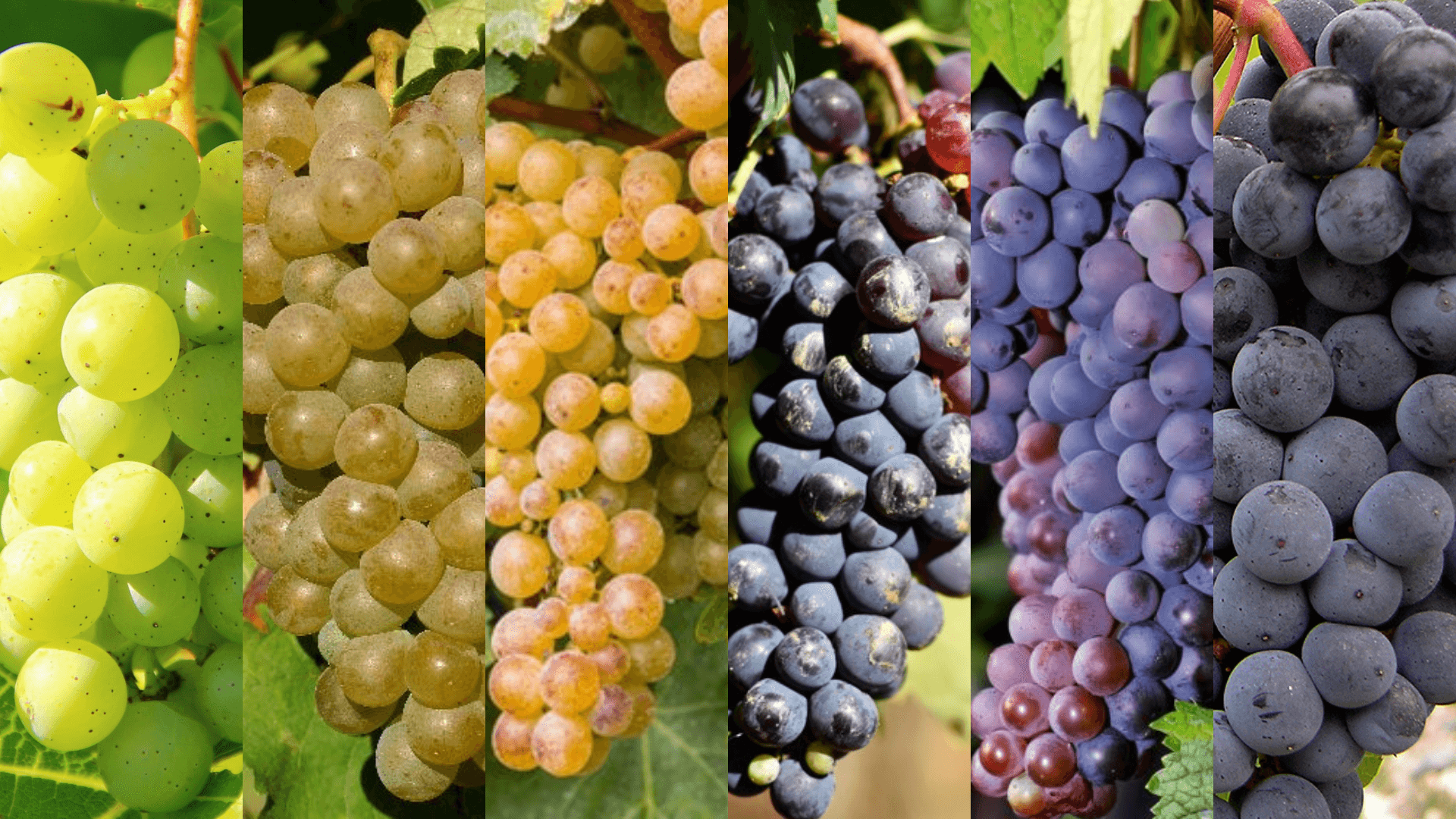Introduction
Understanding wine flavor profiles is essential for both beginners and connoisseurs who wish to enhance their wine tasting experiences. Recognizing the wide array of flavors found in wine enables you to identify the complexities of each bottle and deepens your appreciation for the nuances in every sip. This comprehensive guide will introduce you to the basics of wine flavor profiles, the primary factors affecting them, the main flavor categories, and how to improve your palate to better appreciate the intricate flavors in wine.

I. Characteristics of Wine
Acidity
Acidity is a crucial aspect of wine that contributes to its crispness, freshness, and structure. It is the tart, tangy sensation that occurs when you taste a wine, resulting from the presence of various organic acids. Acidity helps to balance the other components of a wine, such as sweetness, tannins, and body.
Wines with high acidity tend to be bright, vibrant, and refreshing, while those with lower acidity can be perceived as flat or dull. Cooler climate regions often produce wines with higher acidity, whereas warmer climate regions yield wines with lower acidity.
Tannins
Tannins are naturally occurring compounds found in grape skins, seeds, and stems. They contribute to a wine’s structure and astringency, providing a drying sensation on the palate. Tannins are more prevalent in red wines, as they are extracted during the fermentation process when grape skins are in contact with the juice.
Wines with high tannin levels often have a more robust, full-bodied character, while those with lower tannin levels are softer and more approachable. Tannins can also act as natural antioxidants, helping wines to age gracefully over time.
Sweetness
Sweetness in wine is primarily determined by the residual sugar content, which is the remaining sugar after the fermentation process has concluded. Wines can range from bone-dry to lusciously sweet, depending on the winemaker’s intentions and the grape variety used.
Sweetness can help to balance a wine’s acidity, tannins, and body, providing a more harmonious and enjoyable drinking experience. It’s important to note that a wine’s perceived sweetness can also be influenced by its fruitiness, which may not necessarily correlate with its actual sugar content.
Body
The body of a wine refers to its weight, texture, and mouthfeel, which is influenced by factors such as alcohol content, tannins, and acidity. Wines can be classified as light-bodied, medium-bodied, or full-bodied, with varying degrees of richness and complexity.
Light-bodied wines are often delicate and refreshing, with lower alcohol content and tannins. Medium-bodied wines offer a balanced combination of structure and approachability, while full-bodied wines are typically bold, powerful, and high in alcohol and tannins.
Alcohol
Alcohol plays a significant role in shaping a wine’s flavor profile, body, and overall balance. It is a product of the fermentation process when yeast converts sugar into alcohol. Wines can range from low-alcohol (around 5-6% ABV) to high-alcohol (15% ABV or more), depending on factors such as grape variety, winemaking techniques, and climate.
Higher alcohol content typically contributes to a fuller body, more pronounced mouthfeel, and increased warmth or “heat” on the palate. In contrast, lower alcohol content generally results in a lighter, more refreshing wine. It is essential for alcohol to be well-integrated and balanced with the other components of the wine, such as acidity, tannins, and sweetness.
II. Primary Factors Affecting Wine Flavor Profiles
A. Grape variety
Each grape variety possesses unique characteristics that contribute to the wine’s flavor profile. Factors such as the grape’s skin thickness, sugar content, and acidity all play a role in determining the wine’s final taste.
B. Climate and terroir
The climate and terroir (the environment in which the grapes are grown) significantly impact a wine’s flavor profile. Factors like soil composition, temperature, sunlight, and rainfall all influence the grapes’ development, ultimately affecting the wine’s taste.
C. Winemaking techniques and aging
Winemaking techniques, including fermentation, aging, and the use of oak barrels, can significantly alter a wine’s flavor profile. These processes can introduce new flavors or modify existing ones, resulting in a unique taste.
III. The Six Main Wine Flavor Categories
A. Fruit flavors
Fruit flavors are predominant in wine and can range from bright and fresh to dark and jammy, depending on the grape variety and wine style. Here are some examples of fruit flavors in different wine types:
- Red wines: Cherry, raspberry, blackberry, black currant, plum, fig
- White wines: Apple, pear, peach, apricot, pineapple, melon
- Rosé wines: Strawberry, cranberry, watermelon, red currant
- Sparkling wines: Green apple, citrus, tropical fruit, red berries
B. Floral flavors
Floral flavors in wine are delicate and aromatic, often found in white and rosé wines, but can also be present in some reds. Here are some examples:
- Red wines: Violet, rose, peony
- White wines: Jasmine, orange blossom, honeysuckle, elderflower
- Rosé wines: Lavender, rose, hibiscus
- Sparkling wines: Acacia, lily, iris
C. Herb and spice flavors
Herb and spice flavors in wine can be attributed to the grape variety, terroir, or the winemaking process. Examples include:
- Red wines: Eucalyptus, mint, black pepper, clove, cinnamon
- White wines: Lemongrass, basil, white pepper, ginger, nutmeg
- Rosé wines: Rosemary, thyme, pink peppercorn
- Sparkling wines: Anise, fennel, allspice
D. Earth and mineral flavors
Earthy and mineral flavors in wine are often linked to the terroir and can add depth and complexity to a wine’s profile. Examples include:
- Red wines: Mushroom, truffle, wet leaves, slate, graphite
- White wines: Wet stone, flint, chalk, sea salt, oyster shell
- Rosé wines: Clay, limestone
- Sparkling wines: Mineral water, crushed rock, salinity
E. Oak and wood flavors
Oak and wood flavors are introduced during the aging process when the wine is stored in oak barrels. Examples include:
- Red wines: Vanilla, toasted oak, cedar, mocha, smoke
- White wines: Butterscotch, caramel, toasted almond, dill
- Rosé wines: Sandalwood, charred wood
- Sparkling wines: Brioche, toasted bread, hazelnut, marzipan
F. Secondary and tertiary flavors
Secondary flavors arise from the fermentation process, while tertiary flavors develop as the wine ages in the bottle. Examples include:
- Red wines: Leather, tobacco, soy sauce, dried fruit, game
- White wines: Petrol, beeswax, honey, almond, baked apple
- Rosé wines: Dried herbs, potpourri
- Sparkling wines: Yeast, bread dough, butter, cream
IV. Improving Your Palate and Wine Tasting Skills
A. Practice and patience
Improving your palate takes time and practice. Taste wines from different regions, grape varieties, and styles to familiarize yourself with various flavor profiles.
B. Take notes
Document your impressions of each wine you taste, including the flavors you detect, the wine’s structure, and any other noteworthy observations.
C. Attend wine tastings
Participating in wine tastings allows you to learn from experts, discuss your experiences with fellow wine enthusiasts, and explore a wide range of wines.
D. Develop your olfactory sense
Wine’s flavor profile is closely linked to its aroma. Train your sense of smell by identifying different scents in your environment, such as fruits, flowers, herbs, and spices.
E. Experiment with food pairings
Food can enhance or mute specific flavors in wine. Discover the effect of various food pairings on wine flavor profiles by experimenting with different combinations.
Conclusion
Understanding wine flavor profiles is a fascinating journey that can enrich your wine appreciation and elevate your wine experiences. By recognizing the factors that influence a wine’s flavor profile and familiarizing yourself with the main flavor categories, you will be well-equipped to detect and appreciate the complex array of flavors present in each bottle. With practice and dedication, you will develop a refined palate, allowing you to savor and enjoy the world of wine to its fullest.
Frequently Asked Questions
A wine flavor profile refers to the unique combination of aromas, tastes, and textures that define a wine. It encompasses primary flavors from the grape itself, secondary flavors from the winemaking process, and tertiary flavors that develop through aging.
Grape varieties have inherent characteristics that contribute to a wine’s flavor profile. Different grape varieties can impart specific fruit, floral, herbal, or earthy flavors, which form the basis of a wine’s overall taste and aroma.
Terroir refers to the environmental factors such as soil, climate, and topography that influence grape growth and, subsequently, a wine’s flavor profile. These factors can impact grape ripeness, acidity, and tannin levels, ultimately shaping the wine’s unique taste and aroma.
Winemaking techniques, such as fermentation, aging, and blending, can significantly impact a wine’s flavor profile. For example, oak barrel aging can impart vanilla, spice, or toast notes, while malolactic fermentation can add a creamy or buttery character to the wine.
Yes, a wine’s flavor profile can change over time, especially during the aging process. As a wine ages, its primary fruit flavors can become less pronounced, while tertiary flavors like leather, earth, and spices may become more prominent.
Primary flavors originate from the grape variety and include fruit, floral, and herbal notes. Secondary flavors come from the winemaking process and may include flavors from fermentation, oak aging, or other techniques. Tertiary flavors develop during the aging process and can include earthy, spicy, or savory notes.
Developing your palate involves tasting a variety of wines, paying attention to their flavors and aromas, and taking notes to compare and contrast different wines. Participating in wine tastings, discussing wines with knowledgeable friends or professionals, and reading about wine can also help improve your understanding of wine flavor profiles.
Yes, there are resources like wine aroma wheels, which visually represent the various flavor components in wine, helping you identify specific aromas and tastes. Additionally, wine books, online resources, and wine tasting courses can further assist in understanding wine flavors.
Food pairing can either complement or contrast a wine’s flavor profile, enhancing or balancing the flavors in both the wine and the dish. When done correctly, food pairing can elevate the overall dining experience and create a harmonious balance between the wine and the food.
Yes, understanding wine flavor profiles can guide you in selecting wines that align with your taste preferences or suit specific occasions. By becoming familiar with the flavors of different grape varieties, wine styles, and regions, you can make more informed decisions when choosing wines to enjoy or serve to others.
Intrigued by these insights? Become a master of flavor combinations with our Ultimate Guide to Wine and Food Pairing.






